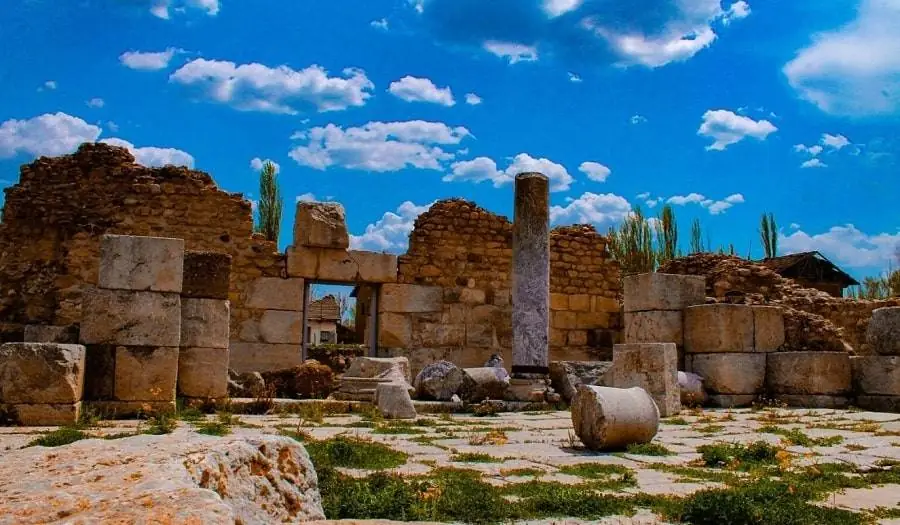Sebastopolis (Sulusaray) is located around 30 kilometres (19 miles) from Artova town and 68 kilometres (42 miles) from Tokat’s city centre. The location is on a plain bordered by mountains, and the Cekerek River flows close by. The location is at the intersection of the south and central to north routes as well as the east to west route. This demonstrates the city’s significance during the Roman and Byzantine eras.
This historic city’s foundation is still a mystery. According to some traditions, the city was first founded in the first century AD under the reign of the Roman emperor Trajan and was later divided from the Pontus Galaticus Polaminiacus provinces and included into the Cappadocia region. About this, there is an epitaph—a rock with numerous rows of inscriptions etched into it. As a memorial for Arrian, the governor of Cappadocia, the epitaph was composed.

The Greek words “Sebasto” and “Polis”—which together make up the word “Sebastopolis”—mean enormous, big, or splendid city. Sebastopolis hence denotes “Great City.” Heracleopolis was the name of the city in various sources. Heracleopolis refers to the city of Heracles, a pagan deity in Greek and Roman mythology who represented strength and power.
♦ 4 Days Turkey Tour – Cappadocia Ephesus Pamukkale Tour
Architectural relics discovered during the excavations carried out by the Directorate of the Tokat Museum in 1987 provided evidence that the city was a significant settlement during the Hellenistic, Roman, and Byzantine periods. Since the artefacts found at Comana Pohtica (Old Tokat) and Sebastopolis are so similar, it is likely that the two ancient cities once had close ties.
A city wall consisting of small, precisely cut stones that were joined without the use of mortar encircled the ancient city. On the northeastern edge of the city, a circular temple with a marble floor was found. The Sebastopolis thermal spring, which is located approximately 3 kilometres (1,9 miles) to the southwest, provided the water for the baths, which are located in the eastern section of the city. During the course of excavations, numerous sculptures, statuettes, friezes, columns, tomb steles, and epitaphs have been discovered.

